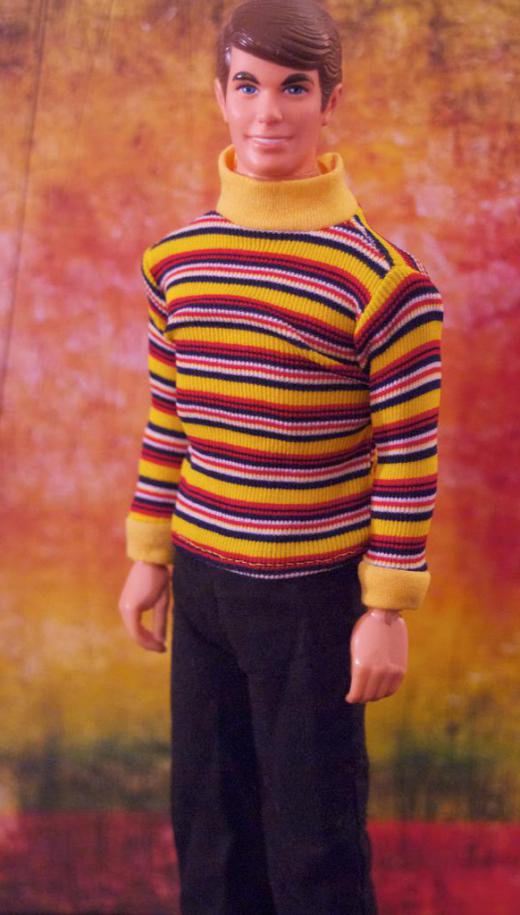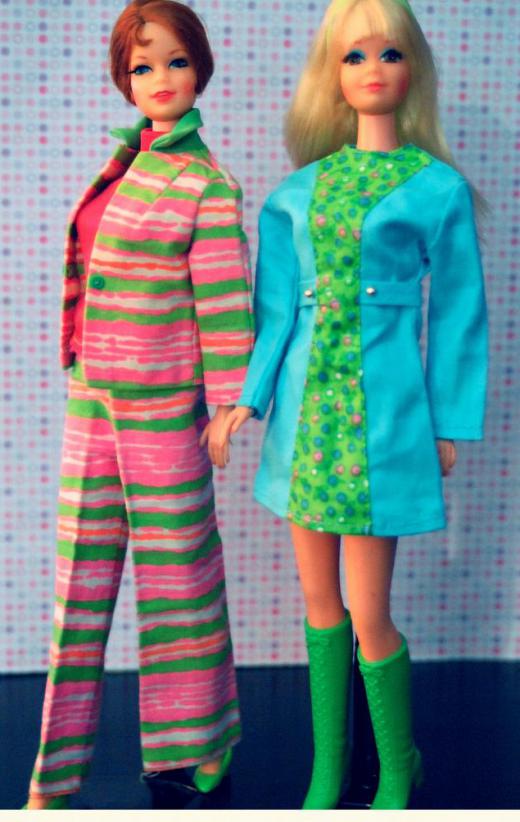In the late 1950s, fashion dolls took the doll market by storm. Fashion dolls had high heels, the figure of a young woman, and stylish clothing. These fashionable dolls quickly replaced the toddler dolls and slim preteen-bodied dolls that had been popular until that time.
Although fashion dolls did not become popular until the late fifties, a few foresighted companies had been making fashion dolls for some time. One example is the Madame Alexander Doll Company's Cissy, a 21-inch full-figured doll with elaborate formal gowns and trendy street dresses. Madame Alexander started manufacturing Cissy in the early fifties, at least five years ahead of the fashion doll craze.

Many early fashion dolls were made entirely from hard plastic, with glued-on wigs for hair. Some hard plastic fashion dolls had vinyl heads with rooted hair, and others had hard vinyl bodies. Most fashion dolls had sleep eyes -- weighted eyes that remain open when the doll is placed in a standing position, but close when the doll is laid on its back. Many fashion dolls also had joints at the knees, waist, and/or elbows.

By the late 1950s, almost all of the major doll companies were manufacturing fashion dolls. Small fashion dolls, which stood eight to ten inches tall, were very popular. Madame Alexander added Cissette, a nine-inch fashion doll, to her catalog in 1957. Cosmopolitan started manufacturing their fashion dolls, Miss Ginger and Little Miss Ginger, in 1957 and 1958, respectively; likewise, Nancy Ann Storybook created Miss Nancy Ann and Little Miss Nancy Ann. Vogue implemented Ginny's big sister, Jill, in 1957; around the same time, Ideal offered Little Miss Revlon.

Fashion dolls also came in a range of larger sizes. Madame Alexander's Elise, which first became available in 1957, was a 16-inch fashion doll with unique jointed ankles that could hold three different positions; as a result, Elise was sold as a ballerina as well as in the typical formal outfits and street dresses. The American Character Doll Company's Sweet Sue grew up to meet the new demands of the market, when the company remade the preteen-bodied doll as a high-heeled fashion doll. Other major doll companies had large fashion dolls, as well, such as Ideal's Miss Revlon and Horsman's Cindy.
Just as with the toddler dolls of the early- to mid-fifties, many lesser-known doll companies made knock-offs of the popular fashion dolls. These dolls were more cheaply made, often lacking the joints at the legs that made the higher-quality dolls so poseable. Their outfits were also made with less attention to detail and quality. Of course, another "knock-off" called Barbie eventually took control of the fashion doll market, and the fashion dolls that had started it all were unable to compete with this new doll's popularity.
As with other dolls, condition and manufacturer determine a fashion doll's current worth. Fashion dolls that were produced by companies known for high quality generally command a higher price, while fashion dolls that were manufactured more cheaply retain a lower value. Also, the less playwear a fashion doll shows, the more it will be worth, with the most valuable dolls being those that are "mint," or virtually untouched. Additionally, fashion dolls that were manufactured before Barbie entered the market tend to be worth a little more.
